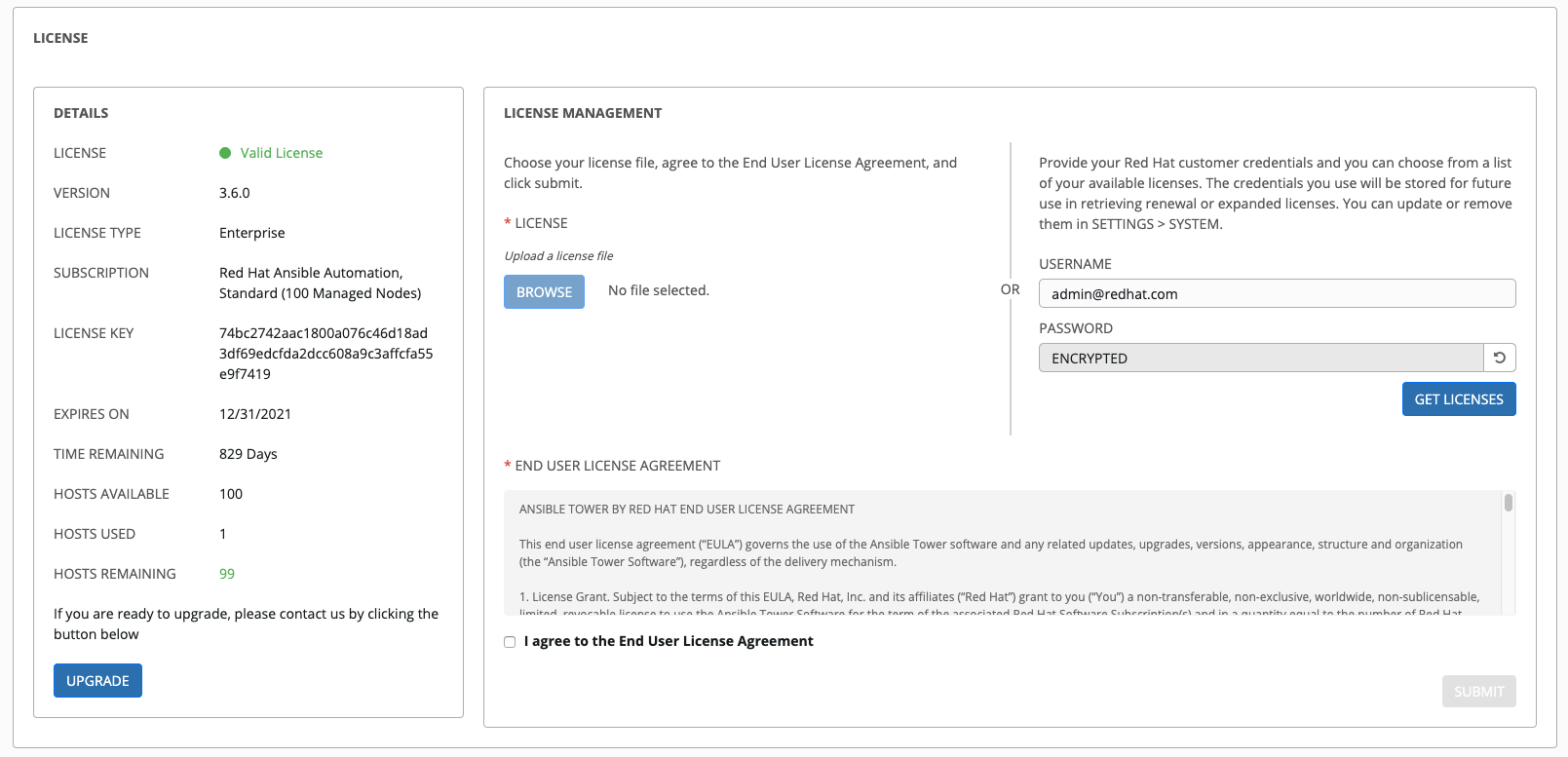3. Import a License¶
Tower requires a valid subscription to run. If you do not already have one, request one from the initial screen when you launch Tower. If you have issues with your subscription, contact Red Hat via the Red Hat Customer portal at https://access.redhat.com/.
Note
To successfully add your license, you must be logged on as the Superuser. Otherwise, the operation will fail.

When Tower launches for the first time, the license screen automatically displays. Use your Red Hat credentials to retrieve and import your subscription, or import the license key you received from Red Hat:
Enter your Red Hat customer credentials on the right side of the screen. Alternatively, if you have a license file, click the Browse button and navigate to the location where the license file is saved to upload it. The uploaded license may be a plain text file or a JSON file, and must include properly formatted JSON code.
Note
The license import will work for Tower nodes with RHEL only. For non-RHEL (e.g. CentOS based Tower nodes), activate the license using the license file instead. When using Red Hat customer credentials, you must use your Red Hat username and password, not your Red Hat account email address and password.
If you entered your credential information, click Get Licenses.
Once your credential information (or license) is recognized, and you are on RHEL 7 and later, you will see a prompt with your Red Hat subscription(s). Choose the subscription you want to run (the example below has only one subscription). You can log in over time and retrieve new subscriptions if you have renewed.

Other non-RHEL subscribers, after uploading the license file, proceed by checking the End User License Agreement.
The bottom half of the license screen involves analytics data collection. This helps Red Hat improve the product by delivering you a much better user experience. For more information about data collection, refer to Usability Analytics and Data Collection. This option is checked by default, but you may opt out of any of the following:
User analytics collects data from the Tower User Interface.
Automation analytics provides a high level analysis of your automation with Ansible Tower, which is used to help you identify trends and anomalous use of Tower. For opt-in of Automation Analytics to have any effect, your instance of Ansible Tower must be running on Red Hat Enterprise Linux. See instructions described in the Automation Analytics section.
Note
At this time, Automation Insights is not supported when Ansible Tower is running in the OpenShift Container Platform. You may change your analytics data collection preferences at any time, as described in the Usability Analytics and Data Collection section.
After you have specified your tracking and analytics preferences, click Submit.
Once your license has been accepted, Tower briefly displays the license screen and navigates you to the Dashboard of the Ansible Tower interface (which you can access by clicking on the Ansible Tower logo at the top left of the screen as well).

For later reference, you can return to the license screen by clicking the Settings (![]() ) icon from the left navigation bar and select the License tab from the Settings screen.
) icon from the left navigation bar and select the License tab from the Settings screen.
